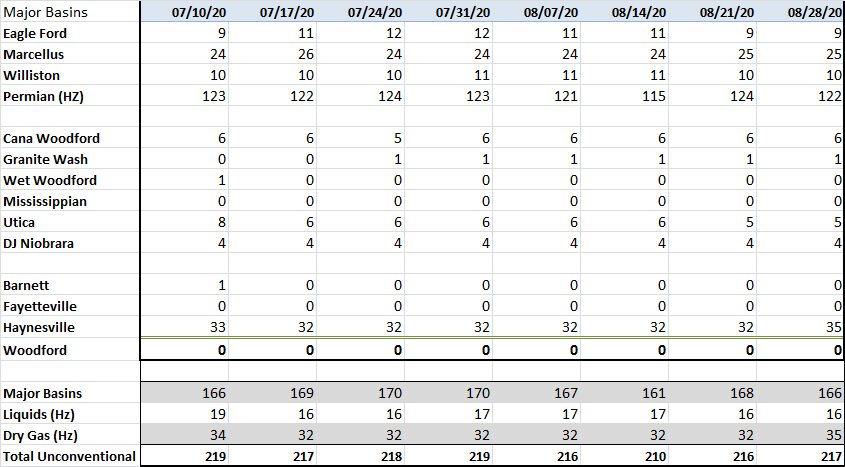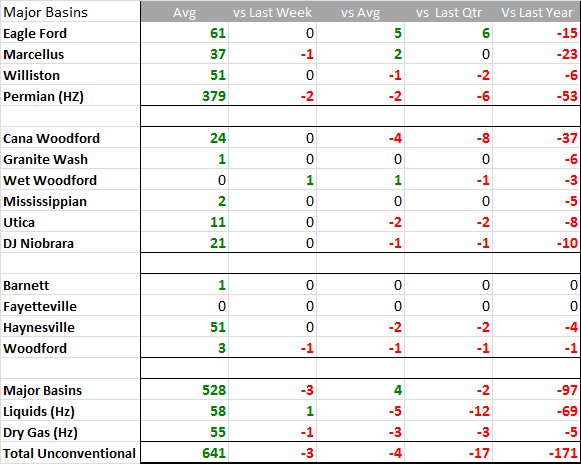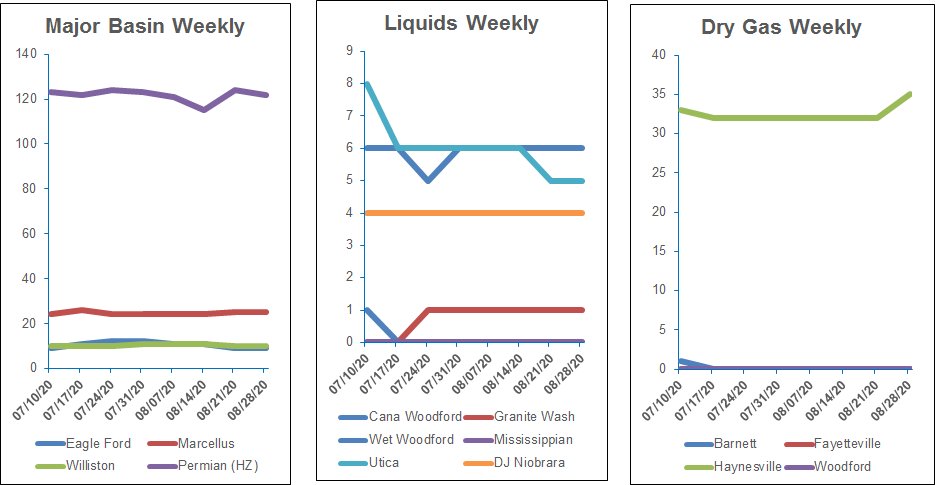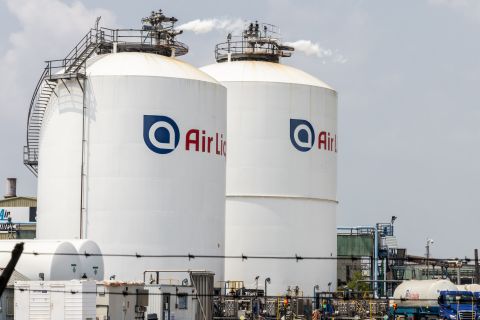
Overall Rig Count Stabilizes
U.S. energy firms kept the number of oil and gas rigs operating unchanged this week with some analysts expecting producers to have shut rigs before Hurricane Laura hit the Gulf Coast.
In August, the oil and gas rig count rose by three to 254, the first monthly increase since December, according to data from Baker Hughes Co. on Aug. 28.
According to Enverus, July drilling and completion activity levels in the seven major shale plays in the U.S. fell to the lowest level since the U.S. Energy Information Administration (EIA) started recording drilled and uncompleted data in late 2013. Only 292 wells were drilled and 262 were completed.
Activity has fallen every month since March, with July’s tally down 73% for the number of wells drilled and down 76% for the number of wells completed compared to March. In the same period, the drilled and uncompleted count between the plays rose 28 to 7,685.
Gas plays in the U.S. fared better during the March-July period. During July, 57 wells were drilled and 63 were completed in Appalachia, down 32% and 37%, respectively. In the Haynesville, 29 wells were drilled and 28 completed, down 19% and 22%. The Anadarko Basin (nine drilled, 15 completed), Bakken (19 drilled, 13 completed) and Niobrara (16 drilled, 15 completed) saw 80%-89% drops in both categories. In the Permian, the 138 wells drilled and 98 completed amounted to 70% and 78% declines, respectively.
Comparatively, Appalachia averaged 31 active rigs in July, down 32%, according to Enverus Rig Analytics. Haynesville active rigs only declined by one to 31. At an average of 13 rigs in July, the Anadarko count fell 72%. The Bakken (10), Niobrara (three) and Permian (132) declined by 80%, 85% and 67%, respectively.
Even though U.S. oil prices are still down about 30% since the start of the year due to coronavirus demand destruction, WTI have gained 128% over the past four months to around $43/bbl on Aug. 28, mostly on hopes global economies and energy demand will snap back as governments lift lockdowns.
Analysts said those higher oil prices have encouraged some energy firms to start adding units.

Trends


Recommended Reading
Air Products Sees $15B Hydrogen, Energy Transition Project Backlog
2024-02-07 - Pennsylvania-headquartered Air Products has eight hydrogen projects underway and is targeting an IRR of more than 10%.
Air Liquide Eyes More Investments as Backlog Grows to $4.8B
2024-02-22 - Air Liquide reported a net profit of €3.08 billion ($US3.33 billion) for 2023, up more than 11% compared to 2022.
Green Swan Seeks US Financing for Global Decarbonization Projects
2024-02-21 - Green Swan, an investment platform seeking to provide capital to countries signed on to the Paris Agreement, is courting U.S. investors to fund decarbonization projects in countries including Iran and Venezuela, its executives told Hart Energy.
Sunoco’s $7B Acquisition of NuStar Evades Further FTC Scrutiny
2024-04-09 - The waiting period under the Hart-Scott-Rodino Antitrust Improvements Act for Sunoco’s pending acquisition of NuStar Energy has expired, bringing the deal one step closer to completion.
Bobby Tudor on Capital Access and Oil, Gas Participation in the Energy Transition
2024-04-05 - Bobby Tudor, the founder and CEO of Artemis Energy Partners, says while public companies are generating cash, private equity firms in the upstream business are facing more difficulties raising new funds, in this Hart Energy Exclusive interview.





